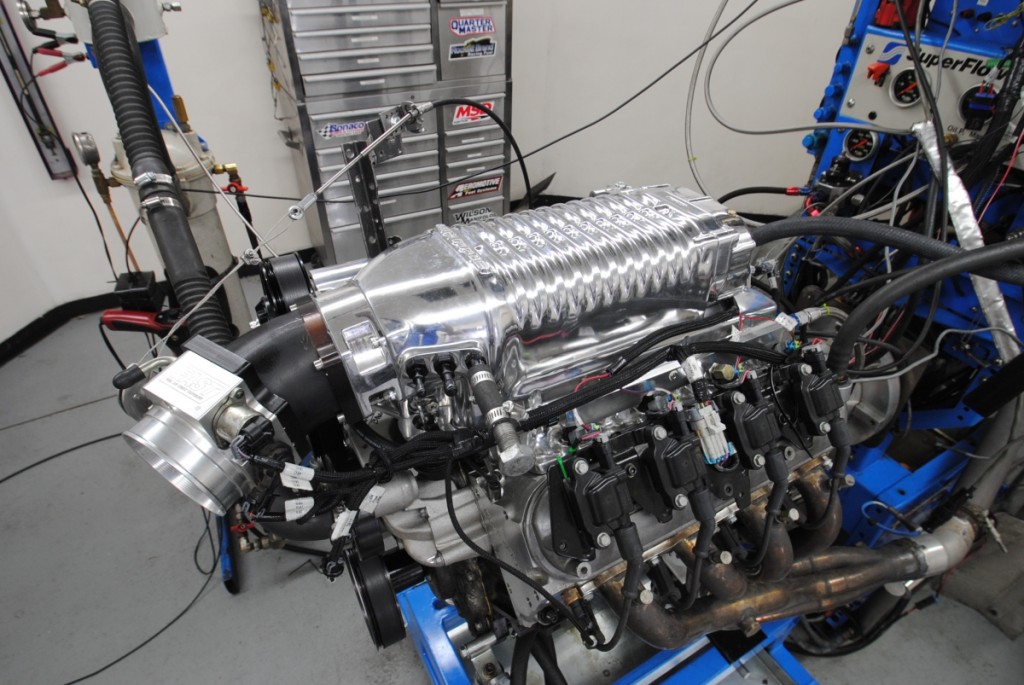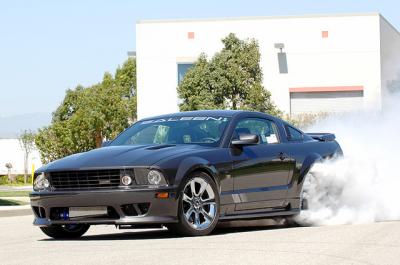By Richard Holdener
Cam swaps for LS motors are always exciting because nothing wakes up an LS like wilder cam timing. We have seen 50, 60, and even 70 horsepower gains from a simple cam swap on an otherwise stock LS application. The gains have been even greater on modified motors. The reason for this is that LS motors already sport sufficient displacement, head and intake flow and lack only proper cam timing to make serious power. That doesn’t mean things like heads and intakes don’t make additional power, it just means that a cam swap should always be the first thing you think about when upgrading your LS. With that in mind, the question now becomes how well does a supercharged LS motor respond to a cam swap? Obviously, that is somewhat of a loaded question, as the outcome depends a great deal on which cam you choose, but the question still remains, do supercharged LS motors respond to blower-specific cam timing?
At the risk of killing the suspense, the simple answer to that question is yes, blower motors work best with blower-specific cam profiles. You can successfully run a supercharger with any of the stock LS cams, or any off-the-shelf normally aspirated cam, but a supercharged application (specifically a positive–displacement supercharged one), will benefit most from a cam profile designed specifically for that form of forced induction. One need only look at the factory LS offerings to see that GM saw fit to design not one but a pair of cam profiles specifically for the factory supercharged LSA and LS9 applications. Might the LS2, LS3 or LS6 cams work on these motors? Yes, just not as well. The LS9 cam profile was designed specifically for the 600+hp supercharged LS9 motor. Not only did the factory succeed with that motor, but the LS9 cam profile has become a go-to cam for many home-made supercharged LS combinations. Looking at the popularity and performance of the LS9, we set up a test to see if we could improve upon the factory offering. For this test, we pit the factory LS9 against a dedicated blower grind from the LS cam experts at Brian Tooley Racing (BTR).
As with most LS cam swaps, the test was a simple one. We ran the supercharged combination first with the LS9 then the Stage 1 cam from BTR. Before swapping cams, we needed to get our house in order with a supercharged test motor. Unfortunately we didn’t have a factory LS9 motor available, and, rather than attempting to duplicate the expensive factory offering, we put together something altogether different. Given the popularity, pricing, and availability of a 4.8L truck engine, we decided to run this test on a supercharged LR4. Prior to testing, we upgraded the beast with a set of JE forged pistons, CNC-ported TFS Gen X 205 heads, and ARP head studs. The head studs were used to secure the Fel-Pro MLS head gaskets, an important consideration given the boost and power level run during the cam test. Additional mods included 85-pound FAST (LS3) injectors, the Big Mouth, 102mm throttle body and a Holley Dominator EFI system. Of course the crowning glory was the 2.9L Whipple, twin-screw supercharger. Capable of supporting 1,000 hp, the intercooled, supercharged system was more than sufficient for our modified 4.8L.
With our supercharged LR4 at the ready, we installed the LS9 cam and let the big dog eat. Run to a max of 6,700 rpm and tuned to perfection on 110-octane race fuel, the supercharged combo produced 675 hp at 6,700 rpm and 533 lb-ft of torque at 6,300 rpm. The proximity of the peak power and torque numbers is a strong indication that the power was still climbing at our self-imposed shut off point of 6,700 rpm (the graph confirms this). Run with the LS9 cam, boost from the Whipple supercharger started at 10.1 psi at 3,000 rpm then rose to a peak of 13.9 psi at 6,700 rpm. Satisfied with the repeatability of our results, we swapped in the Stage 1 cam from BTR. After minor adjustments to the fuel curve to match the air/fuel of the LS9 cam (no changes were made to timing), we were rewarded with peak numbers of 688 hp at 6,700 rpm and 546 lb-ft of torque at 6,300 rpm. The gain in power came with a slight drop in boost, down to a peak of 9.7 psi. The dedicated blower cam offered not just more power but less boost as well, a sure sign of a well-designed blower profile. We liked the gains offered by the dedicated blower cam, but it should be noted that the gains would be ever greater on an application with increased displacement and power.
Supercharged LS applications require very specific cam timing. GM recognized this when they designed the LS9 cam for the factory supercharged 6.2L. Typically the positive-displacement, supercharged cam profiles offer wide lobe separations and minimal (or negative) overlap. A couple side benefits of a blower grind is that it helps improve idle quality and enhance power production higher in the rev range (compared to a typical NA cam profile). Designed for larger displacement, supercharged applications, we couldn’t help but wonder how the factory LS9 cam worked on the smaller 4.8L, and if there were further improvements to be made over the factory offering. Compared to the stock LS9 cam, the Stage 1 cam profile from Brian Tooley Racing offered slightly more lift (+.048 in, +.024 ex), slightly more duration (+12 degrees in, +8 degrees ex) and a slightly tighter lsa (120 vs 122.5). The net result was an increase in power above 4,000 rpm to the tune of 15-16 hp. The cam swap also dropped the boost curve by .3 psi.
Sources
ATI;atiracing.com, Brian Tooley Racing;briantooleyracing.com, COMP Cams;compcams.com, FAST; fuelairspark.com, Holley/Hooker;holley.com, JE Pistons;jepistons.com, Lucas Oil;lucasoil.com, Trick Flow Specialties;trickflow.com, Whipple Superchargers;whipplesuperchargers.com



















